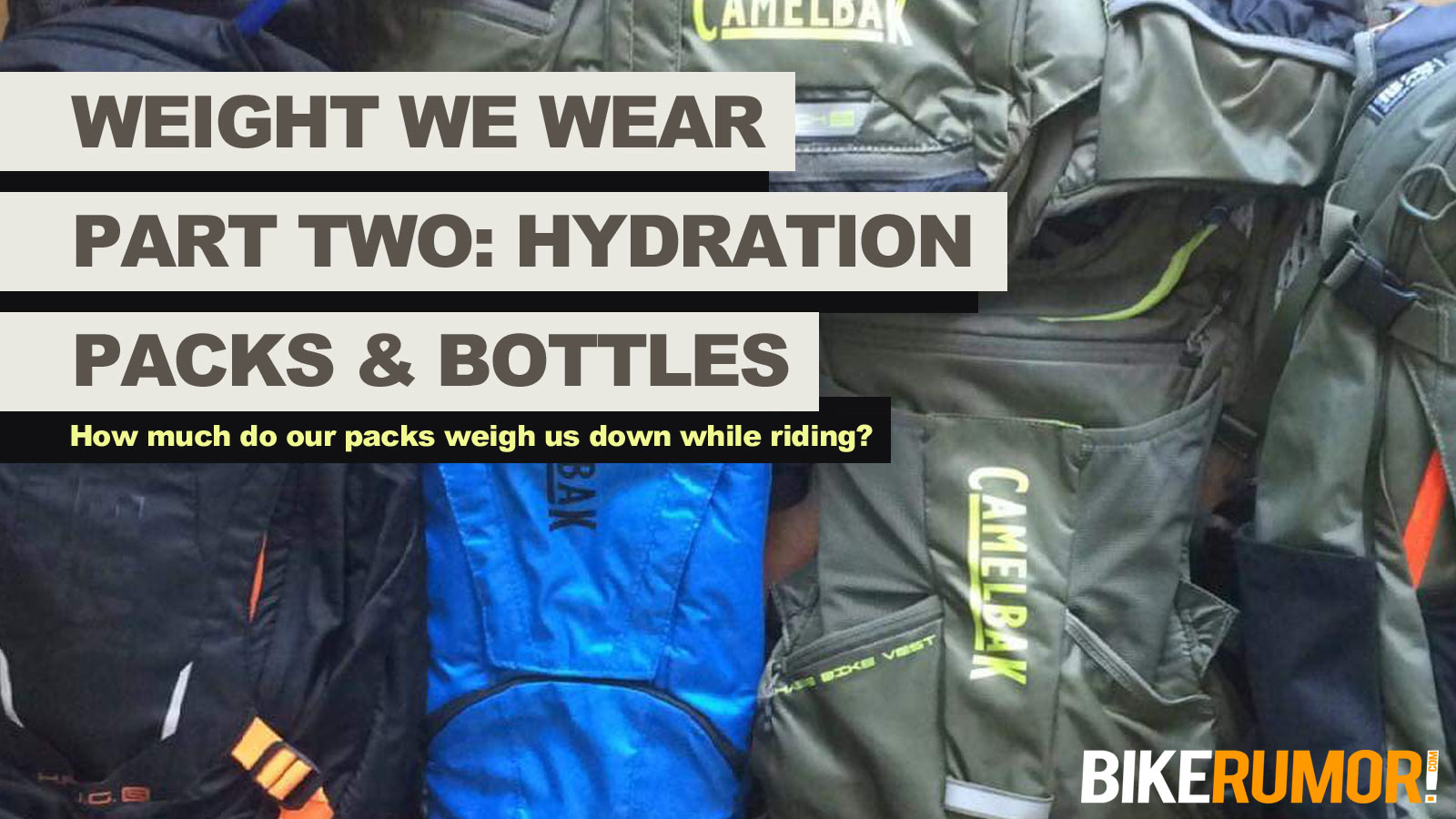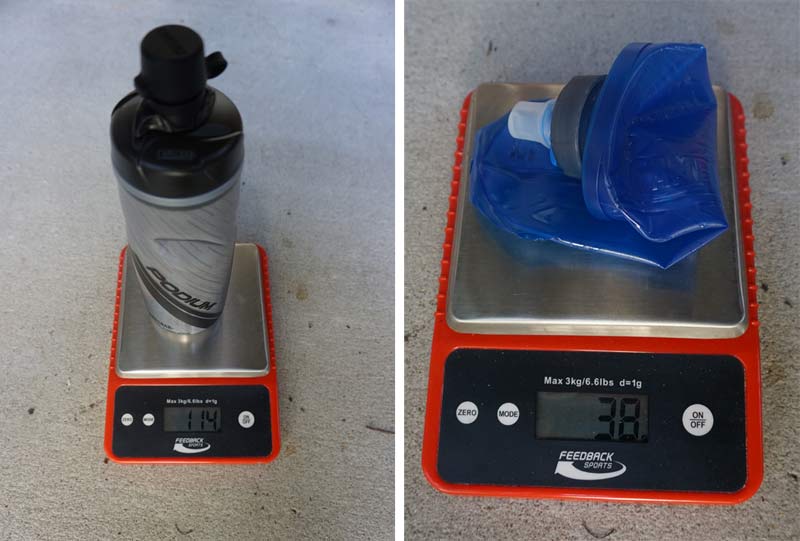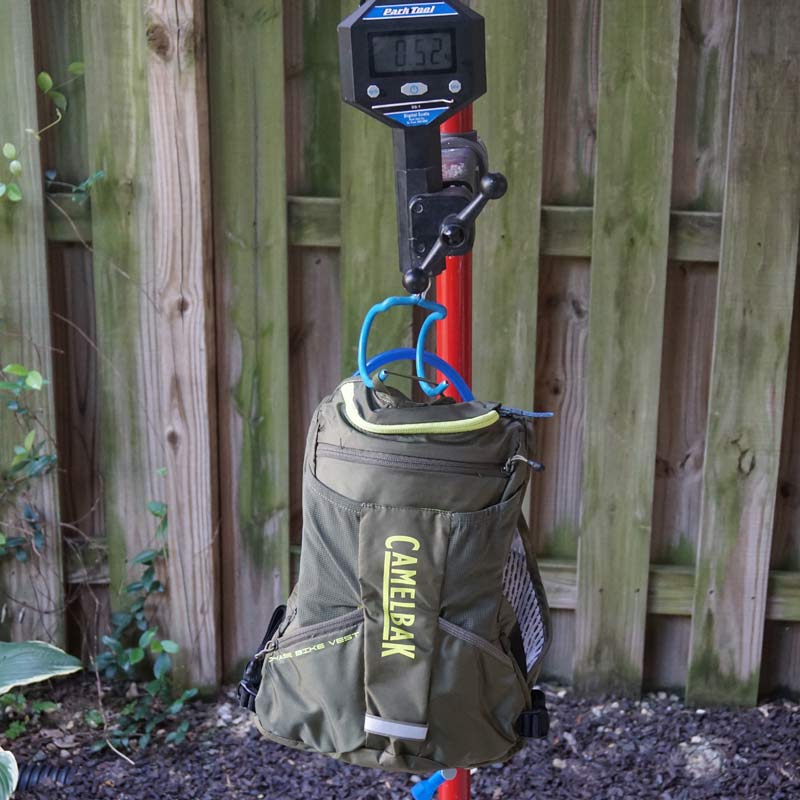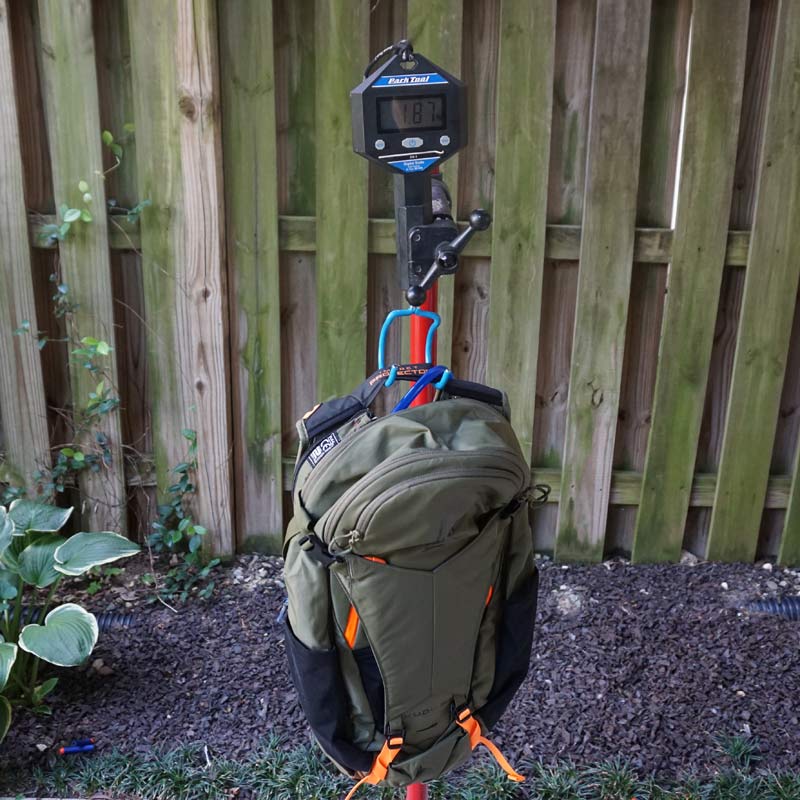Ever wonder how much weight you’re adding to your bike+rider system by wearing a hydration pack versus a bottle? Turns out, when full, the difference can be eight pounds or more! Sure, you’re getting a lot more water, but there are a number of variables to consider when looking at where that weight is carried, how much water you need to bring, and what features you need in a pack.
In Part Two of the Bikerumor Weight We Wear series, we explore all of the options and show how the weight adds up. We partnered with Camelbak because they offer a mind numbing range of packs, from the minimalist and all-day packs tested here, and everything in between to suit any type of rider and riding. Here’s everything you need to know about picking the right pack and minimizing your riding weight:
Water weight is the big one, easily doubling or quadrupling the weight of the hydration system. Each mL of water weighs 1g, so one Liter weights 1,000g, or 2.2lbs. Here’s how the bottles and packs stack up with empty and full weights, based on maximum capacity. Empty pack weights are with the empty reservoir inside:
- Camelbak Podium 21oz Dirt Series bottle: 114g empty / 735g full (1.62lb)
- Camelbak Quick Stow 17oz flask: 38g empty / 538g full (1.19lb)
- Camelbak Chase Bike Vest: 520g empty / 2,020g full (4.45lb)
- Camelbak Repack LR4 hip pack: 500g empty / 2000g full (4.4lb)
- Camelbak Classic hydration pack (not shown): 380g empty / 2,880g full (6.35lb)
- Camelbak H.A.W.G. LR20 hydration pack: 1,280g empty / 4,280g full (9.44lb)
- Camelbak KUDU back protection pack: 1,870g empty / 4,870g full (10.74lb)
Keeping in mind that, at a general minimum, you’ll still be adding a tube, pump and tool, the weight will go up. Add in a shock pump, quick link, zip ties, snacks and a light jacket and you can easily add another pound or two. While we started with clothing and showed that it might only add 1-1.5 pounds to go from XC to enduro, we keep adding pounds with the packs. It all adds up, and in Part Three we’ll show you how much shoes add to the equation! Huge thanks to Camelbak for supporting this series and providing the packs. Check claimed weights for every pack they make on their website, making it easy to compare and find the right one for your needs.
Be sure to check out Part One to see how the clothing weight can add up as you go from road to XC to trail to enduro and downhill. Stay tuned, and Like this video and subscribe to Bikerumor on Youtube to get the first look at all of our tech videos!





